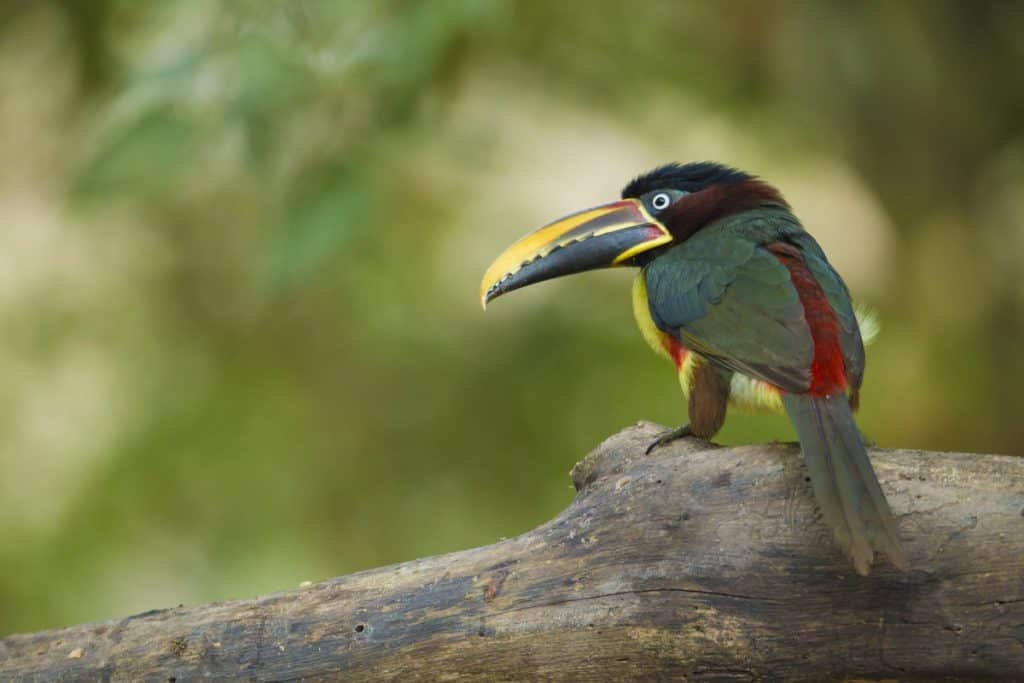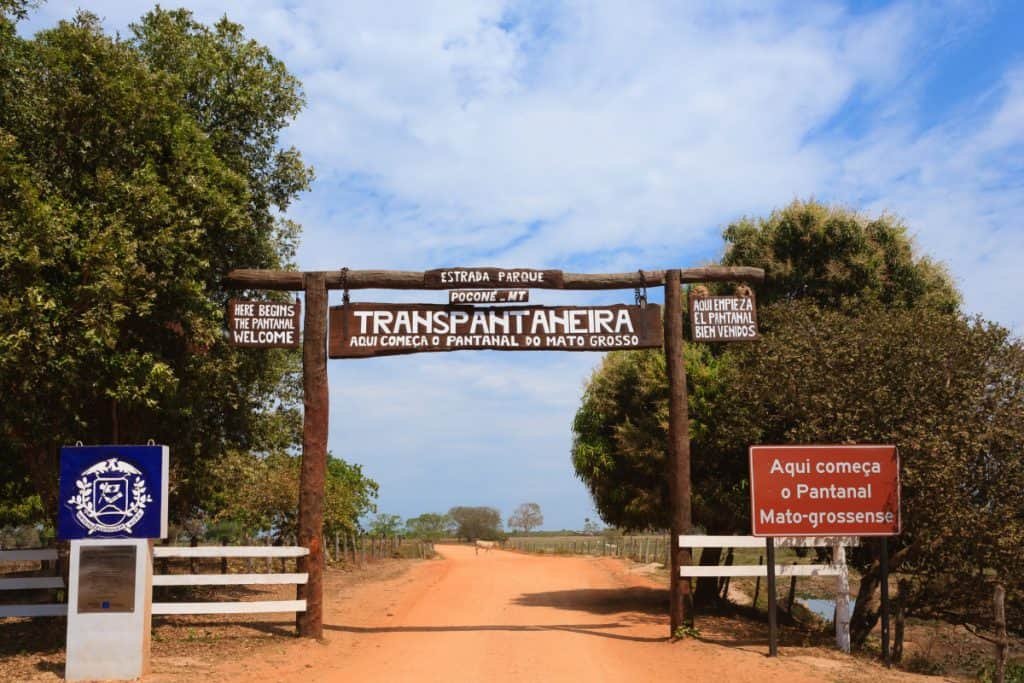People often believe the Pantanal is a subregion of the Amazon rainforest. It is understandable, both have a rich biodiversity, but they are very different in terms of ecosystems. The Pantanal is a large wetland area, that has up to 80% of its land covered during the wet season, while the Amazon is a forest, and even though it is also rainy, it mostly doesn’t have swamps or wetlands.
The Pantanal is not a part of the Amazon Forest. It takes a large part of the center-west of Brazil, as well as a part of Bolivia and Paraguay, called Chaco.
Despite its size, it takes only around 2% of the Brazilian territory, mostly within the states of Mato Grosso and Mato Grosso do Sul. It has around 463 bird species, 263 fish species, 132 mammals, 41 amphibians, and 113 reptiles, besides almost 2000 plant varieties.

Due to the weather dynamics – a rainy season and a dry season – it allows for complex biodiversity and interesting wildlife.
The Amazon surely has a lot to offer like deep jungles, insects, and abundant wildlife, but the Pantanal Wetlands certainly have its own appeal.
This is where you can see jaguars and alligators, just to name a couple. Seeing wildlife in Pantanal is easier than in the Amazon, not only due to its vast plains and grasslands but also due to it being one of the most varied biomes on Earth.
What other biomes border the Pantanal wetlands
The Pantanal is in the center of the South American continent, therefore it has the influence of several other biomes that surround it. It borders with Amazon to the North, the great plains of Brazil (cerrado) to the East, the Atlantic forest to the South East, and the Chaco from the West and South West – a similar biome in Bolivia and Paraguay.
An interesting fact is that several species that are endangered in other biomes are actually thriving in Pantanal, such as the Tuiuiú, also known as Jabiru (Jabiru mycteria) – the bird that is the symbol of Pantanal. This bird can reach up to 6.6 feet (2 meters) of width with the wings open.
How to get to Pantanal
First, you need to decide if you will go to the Southern Pantanal or the Northern Pantanal (or both!). Usually, if you are into fishing, cultural immersion, and see some alligators, capybaras, and birds, you should head to the Northern Pantanal.

However, if you want a more in-depth wildlife experience and some river cruising to really immerse yourself in nature, you should go to the Southern portion.
We don’t recommend hiring cars because this part of the country is less populated than the coastal regions and bigger cities, therefore if something happens on the way, you might have trouble getting phone signal or even seeing a car passing by to get help.
If you have some money to spare and are into some luxurious experience, hiring a charter flight might be a great option for reaching both sides of the Pantanal. To keep the costs down, I would still advise to reach the main cities in the State by commercial flights and hire a chartered plane from there.
Another option is to hire the chartered flight between Southern and Northern Pantanal to be able to see both sides of it. I found this video on Youtube that gives an overview of how the airstrips look like and how small the planes are!
You can see how untouched the landscape is and how it changes from a more forest-like type of vegetation in the north (closer to Amazon) to a more swampy looking full of lakes, ponds, and rivers on the south. If you have the money, this might be a great way of having a whole different perspective by seeing the Pantanal from up above.
If you can’t hire a chartered flight, then your best bet is to get a commercial flight into the state capitals and then a bus to the towns that are deeper inside the wetlands. Another great option is to hire a tour with accommodation included leaving from these capitals for a hassle free visit.
Make sure to check the full itinerary as due to the large distances in Brazil, a couple days of the full tours might be taken just moving between the locations and in the end you might actually have little time to see interesting things.
Checking the full detailed list of the tours and checking on Google Maps the distances might give you an idea of how much of your tour is being taken by commuting.
Northern Pantanal
You probably will fly into the Mato Grosso State capital, Cuiabá. From there you should get a bus or hire a private driver to Cáceres or Poconé for a better experience. Poconé is a 1:30 min drive from Cuiabá through the Transpantaneira road, whereas Cáceres can take up to 3 hours to reach by car by the national road 070.
Protip: If you do go to Poconé, make sure to visit SESC (a country-wide chain leisure center, very famous in Brazil) for the largest butterfly house in Brazil (largest than the one in Iguazu Falls).
You can also reach it by flying to Santa Cruz de La Sierra in Bolivia and getting a bus or a private driver to Puerto Quijarro or San Matias.
Southern Pantanal
Fly into Campo Grande, Mato Grosso do Sul capital, Bonito, or directly to Corumbá. From Campo Grande, take a 2-hour bus or private driver to Aquidauana. You will likely want to be based in Corumbá or Aquidauana as they have good infrastructure and are close enough to the wild to have some tours for you to go on.
From other countries, it might be harder to reach this part, so we advise you to start your journey from Brazil.
Is it worth going to Pantanal?
Well, if you are not convinced by now, you should! Pantanal is largely untouched by civilization, so it is one of the last spots in the world you can see nature in its true form.

The portion of Pantanal you will want to go to will depend largely on the time of the year you will be heading there as it will impact which activities you will be able to do according to the season.
If you are going between May and September, you will be going on the dry season, being July the driest month. If you want to go birdwatching, this is the perfect time, as it is when most birds have not seasonally migrated and you might even be able to interact with a few of them. This season is not great for a river cruise, so be aware of that.
Between October and March is the wet season, so be prepared for some rain! However, this is the best season for fishing and the activities that involve going to the swamps and rivers (like the river cruise we mentioned). It might be that you can only reach your accommodation by chartered plane or boat, so factor that in.
Do people live in Pantanal?
Well, yes and no. There will be people in small towns sprinkled throughout the region, but they are small and distant from one another. The deeper you go into the Pantanal, the less populated it will be. This is a great thing for wildlife, that is able to exist without a lot of human interference.
However, there are some large farms, mostly for cattle, in the region. They take advantage of the vast plain fields and the abundance of water as a perfect place for livestock farming. It is not uncommon to see a large cattle being conducted by Brazilian cowboys on these lands.
As you can see, Pantanal is a gem, hidden in the inner parts of Brazil. It is a bit hard to reach it, but once you get there it is truly worth it! If you have the chance, we highly recommend you spend a few days visiting this amazing place. There is a lot that can be done in there, but around 3 days to each side can give you an overview of the wildlife and the landscape.
If you are going to Pantanal, you should check our posts about the other nearby natural wonders and archeological sites you should visit while there:

